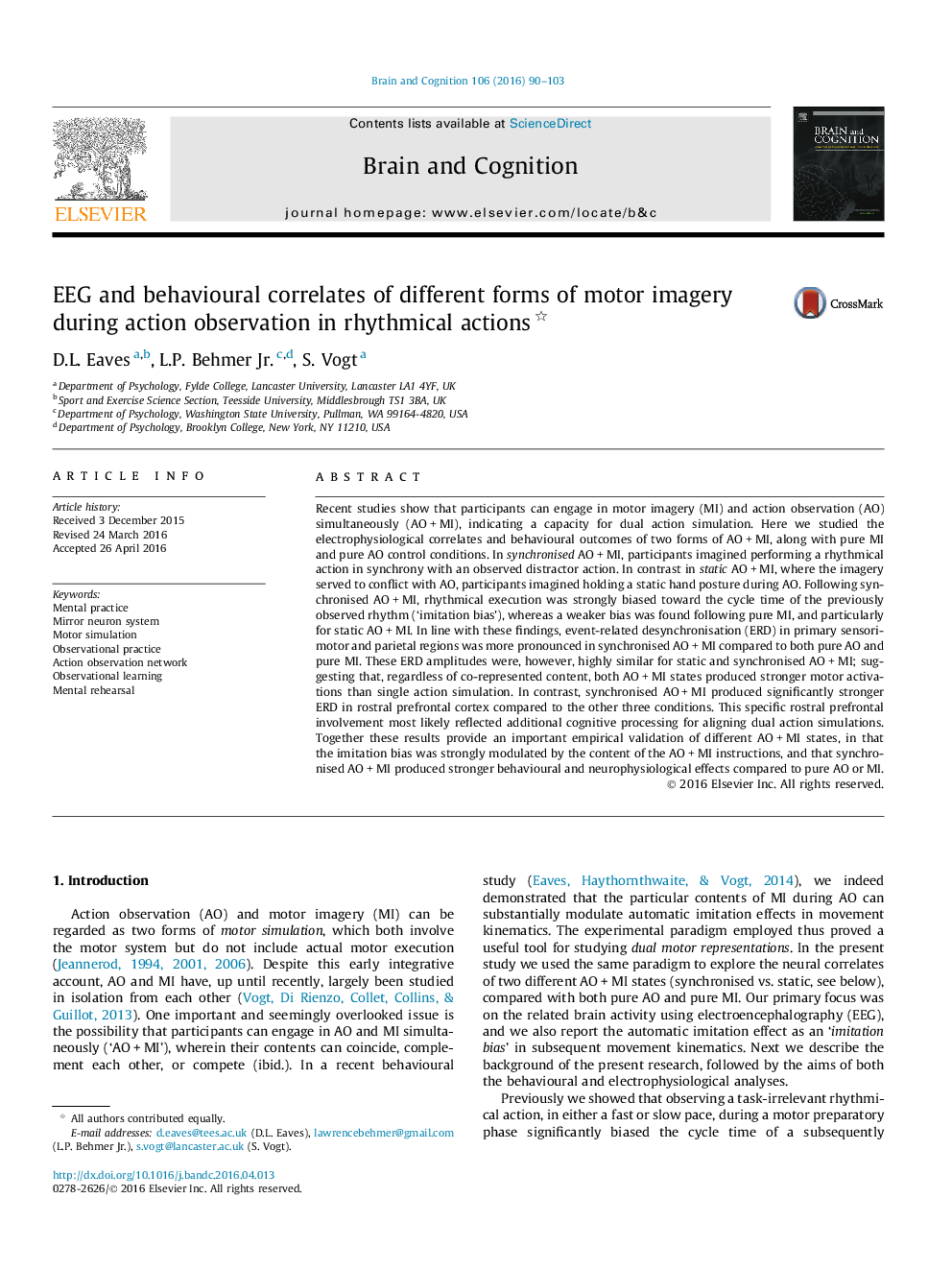| Article ID | Journal | Published Year | Pages | File Type |
|---|---|---|---|---|
| 7282965 | Brain and Cognition | 2016 | 14 Pages |
Abstract
Recent studies show that participants can engage in motor imagery (MI) and action observation (AO) simultaneously (AOÂ +Â MI), indicating a capacity for dual action simulation. Here we studied the electrophysiological correlates and behavioural outcomes of two forms of AOÂ +Â MI, along with pure MI and pure AO control conditions. In synchronised AOÂ +Â MI, participants imagined performing a rhythmical action in synchrony with an observed distractor action. In contrast in static AOÂ +Â MI, where the imagery served to conflict with AO, participants imagined holding a static hand posture during AO. Following synchronised AOÂ +Â MI, rhythmical execution was strongly biased toward the cycle time of the previously observed rhythm ('imitation bias'), whereas a weaker bias was found following pure MI, and particularly for static AOÂ +Â MI. In line with these findings, event-related desynchronisation (ERD) in primary sensorimotor and parietal regions was more pronounced in synchronised AOÂ +Â MI compared to both pure AO and pure MI. These ERD amplitudes were, however, highly similar for static and synchronised AOÂ +Â MI; suggesting that, regardless of co-represented content, both AOÂ +Â MI states produced stronger motor activations than single action simulation. In contrast, synchronised AOÂ +Â MI produced significantly stronger ERD in rostral prefrontal cortex compared to the other three conditions. This specific rostral prefrontal involvement most likely reflected additional cognitive processing for aligning dual action simulations. Together these results provide an important empirical validation of different AOÂ +Â MI states, in that the imitation bias was strongly modulated by the content of the AOÂ +Â MI instructions, and that synchronised AOÂ +Â MI produced stronger behavioural and neurophysiological effects compared to pure AO or MI.
Keywords
Related Topics
Life Sciences
Neuroscience
Cognitive Neuroscience
Authors
D.L. Eaves, L.P. Jr., S. Vogt,
